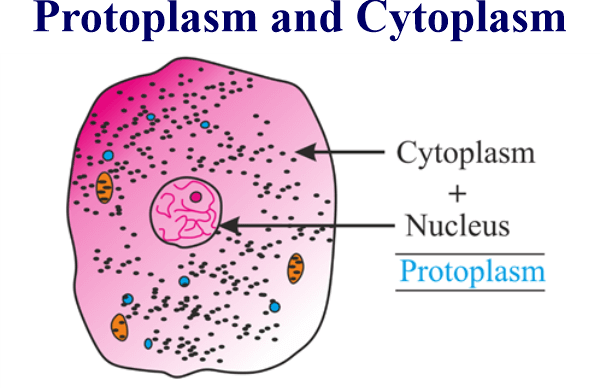Difference between cytoplasm and ProtoplasmWhat is cytoplasm?The component of the cell between the cell's nucleus and the cell's plasma membrane is called cytoplasm. It is a liquid entity that makes up most of the cell's interior. All the organelles of the cells, like mitochondria, plastids (in plants), ribosomes, and endoplasmic reticulum, are present in the cytoplasm. The cytoplasm of the cells is made up of liquid, salts, and some proteins. All the components of the cell which are embedded into the cytoplasm are held together by protein strands. 
Organelles present in the cytoplasm include -
What is Protoplasm?All the components of the cells that are found inside the cell membrane comprise Protoplasm. The Protoplasm of the cell is divided into two major parts - the nucleus and the cytoplasm. The Protoplasm of the cell has two components: an organic component and an inorganic component. The inorganic component includes water, minerals, salts, and gases. On the other hand, the organic component of the Protoplasm includes proteins, carbohydrates, nucleic acid, and lipids. The ratio of an organic component to an inorganic component varies according to the cell type, organism, and also position of the cell in the body. Functions of Protoplasm -
Difference between cytoplasm and protoplasm
Next TopicDifference between
|
 For Videos Join Our Youtube Channel: Join Now
For Videos Join Our Youtube Channel: Join Now
Feedback
- Send your Feedback to [email protected]
Help Others, Please Share









